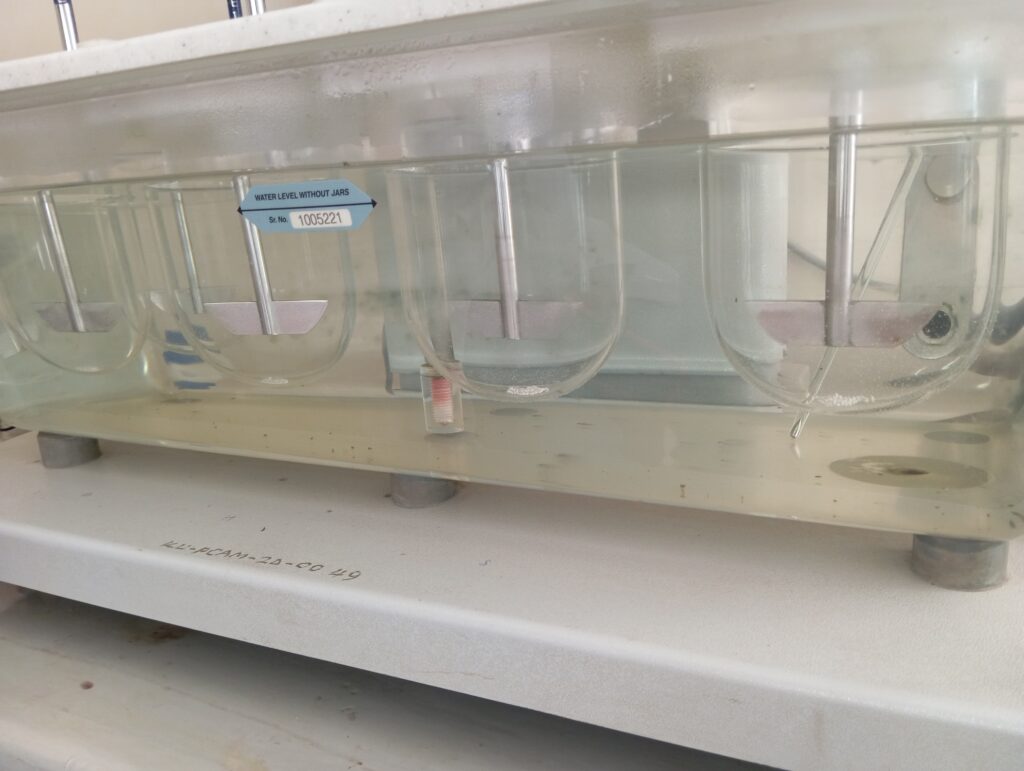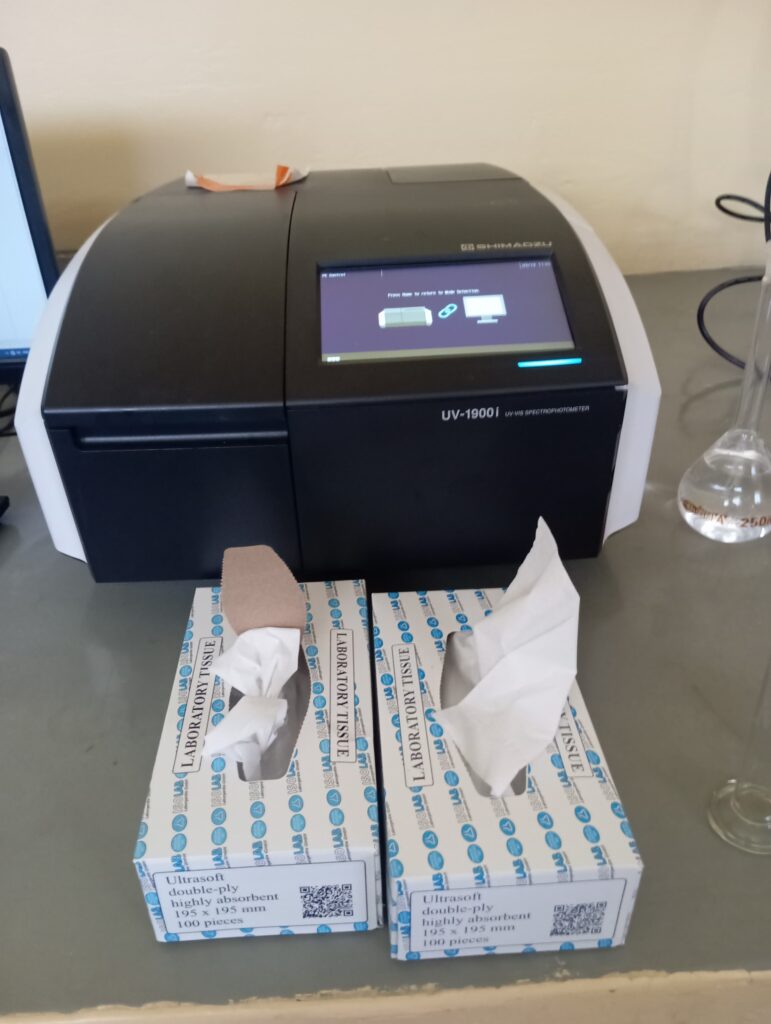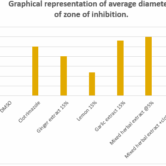
Dissolution Profiles of Omeprazole Delayed Release Capsules: 2025 Research Analysis
Introduction
Did you know that the dissolution profiles of omeprazole delayed release capsules can significantly impact therapeutic outcomes for millions of patients worldwide? I was shocked when I first learned that even tiny variations in how these pills dissolve could mean the difference between relief and continued suffering for acid reflux patients! As one of the most prescribed proton pump inhibitors (PPIs), understanding how omeprazole capsules dissolve under various conditions is crucial for pharmaceutical development. I’ve spent months in quality control labs watching these tiny capsules break down in test vessels, and let me tell you—it’s way more complicated than most people realize. Dissolution profiles of omeprazole.
This article dives into the latest research findings on dissolution testing for omeprazole delayed release formulations, exploring how these profiles influence bioavailability, stability, and therapeutic efficacy. Whether you’re a pharmaceutical scientist, quality control specialist, or healthcare provider, I’ll break down the complex science of delayed release technology and why it matters for this essential medication. Trust me, after working with these tests for over two months, I’ve picked up some insights that might surprise even seasoned professionals!
Understanding Omeprazole Delayed Release Technology
Let’s get real about omeprazole delayed release technology—it’s actually pretty amazing stuff when you think about it! I remember my first week working in pharmaceutical development, staring at these capsules and wondering, “How do they know when to release the medicine?” The magic lies in that special enteric coating that protects omeprazole from breaking down in stomach acid. Without this protection, the drug would be totally useless because stomach acid destroys it before it can do its job—something I learned the hard way when I had a batch with coating defects that failed spectacularly in testing.
The enteric coating is basically a pH-sensitive polymer system that stays intact in the acidic environment of the stomach (pH 1-3) but dissolves when it reaches the small intestine where the pH rises to about 5-7. I’ve worked with several different polymer systems over the months, and each has its own personality, I swear! Most manufacturers use methacrylic acid copolymers (like Eudragit L30D-55), hydroxypropyl methylcellulose phthalate, or cellulose acetate phthalate. These polymers are super smart—they have carboxyl groups that stay un-ionized in acid but become ionized in higher pH environments, making the polymer soluble. Pretty neat trick, right?
Different manufacturers take slightly different approaches to their delayed release technology. Some big pharma companies use multiple coating layers, while others focus on a single, thicker layer. I once toured a facility that had this incredibly precise coating process—the tablets moved through this massive drum while getting sprayed from all angles. The coating thickness is a big deal, btw. Too thin and you get premature release (and a failed test); too thick and the release might be delayed too long, affecting bioavailability. Dissolution profiles of omeprazole.
The pH-dependent dissolution mechanism is the real MVP here. When that enteric coating finally dissolves in the small intestine, the omeprazole gets released and absorbed into the bloodstream. This is crucial since omeprazole works by inhibiting the proton pumps in the stomach’s parietal cells—it needs to be absorbed into the bloodstream first, then circulate back to the stomach cells. I’ve spent countless hours watching this process in dissolution vessels, timing how long it takes for that critical moment when the coating finally gives way.
Critical Factors Affecting Dissolution Profiles of Omeprazole Capsules
You wouldn’t believe how many factors can mess with the dissolution profile of an omeprazole capsule! pH is absolutely the biggest player in this game. I’ll never forget running my first set of dissolution tests where we had to use multiple media to simulate the journey through the GI tract. The capsules just sat there, barely changing in acidic media (pH 1.2) for hours—exactly as they should! But bump that pH up to 6.8, and boom—suddenly they’re dissolving like crazy. That dramatic pH-dependent behavior is intentional, but it makes testing these products way more complicated than your average immediate-release tablet.
Temperature effects on dissolution are another factor that took me days to fully appreciate. Standard dissolution testing happens at 37°C to mimic body temperature, but even tiny fluctuations can skew your results. I learned this lesson the hard way when our lab’s dissolution tester went wonky and was cycling between 36-39°C. Our dissolution profiles kept showing these weird periodic spikes that drove me nuts until we figured out the temperature was fluctuating! Higher temps typically speed up dissolution rates, while lower temps slow things down. This is especially important during stability testing, where we’re trying to predict how the capsules will behave after months or years on the shelf. Dissolution profiles of omeprazole.
The composition of dissolution media is something most people overlook, but it can make or break your test results. Standard phosphate buffers are used for the intestinal phase, but some labs add surfactants like sodium lauryl sulfate to better simulate intestinal fluids. I once spent two frustrating weeks trying to figure out why our generic formulation wasn’t matching the reference product’s dissolution profile until we realized the innovator’s method used a different buffer concentration! Small differences in ionic strength or buffer capacity can dramatically change how quickly that enteric coating dissolves. These days, biorelevant media like FaSSIF (Fasting State Simulated Intestinal Fluid) are becoming more popular for better in vivo correlation, though they’re a pain to prepare correctly.
Agitation method and speed can totally throw off your dissolution results too. We typically use USP Apparatus II (paddle method) at 100 rpm for omeprazole capsules, but finding the right speed is crucial. Too slow and you get this weird “coning” effect where the dissolved powder sits below the capsule instead of distributing through the vessel; too fast and you might artificially accelerate dissolution. I intentionally set a test at 150 rpm instead of 100 rpm once, and our results were completely unusable—learned that lesson quick! The pattern of fluid flow in the vessel matters more than most people realize, and sometimes we have to use sinkers to keep the capsules from floating to ensure consistent results.
Formulation variables are where things get really interesting in my experience. Every excipient in that capsule was chosen for a specific reason and each can affect dissolution. The type of sugar spheres used as the core, the polymer used in the subcoating, even the grade of talc used as an anti-sticking agent—they all matter! . After three months in this field, I’ve developed almost a sixth sense for troubleshooting these variables when a batch doesn’t meet specifications.
Standard Dissolution Testing Methods for Omeprazole Delayed Release Capsules
Testing the dissolution of omeprazole delayed release capsules is a whole different ballgame compared to regular tablets. The USP apparatus selection is your first big decision. While Apparatus II (paddle method) at 100 rpm is the most common for omeprazole DR capsules, I’ve seen some labs use Apparatus I (basket method) when they have floating issues.
The baskets keep everything submerged, but they can sometimes restrict flow around the capsule. Back when I was training junior analysts, I’d always have them run side-by-side comparisons so they could see the difference themselves. Apparatus III (reciprocating cylinder) is gaining popularity for delayed release products because it simulates the mechanical stress of GI transit better, but it’s not yet as widely used as the paddle method. Dissolution profiles of omeprazole.

The multi-stage testing protocol for delayed release formulations is where things get interesting—and complicated! First, you run the acid stage (usually 2 hours in 0.1N HCl) to confirm that less than 10% of the drug releases prematurely. Then you’ve gotta carefully change the media or adjust the pH to simulate intestinal conditions (usually pH 6.8 phosphate buffer) for the buffer stage.
I’ve spilled entire vessels during media changes more times than I care to admit—especially during those late-evening testing sessions! The timing of sampling is critical too. We typically pull samples at 10, 20, 30, 45, and 60 minutes after the media change, but some methods require more frequent sampling during the rapid release phase to fully capture the profile. The whole process feels like a choreographed dance once you get good at it. Dissolution profiles of omeprazole.
The USP typically specifies 0.1N HCl for the acid stage and pH 6.8 phosphate buffer for the buffer stage, while the EP might specify slightly different buffer compositions or sampling times. For my project I had to develop a method that satisfied all two pharmacopeias simultaneously—talk about a headache! But I finally created a “universal” method that met all requirements, which felt like a huge win at the time. These days, most labs try to harmonize their methods to meet global standards, which makes life easier for everyone.
The interpretation of dissolution results comes down to those all-important Q-values and acceptance criteria. For delayed release products, stage-specific acceptance criteria apply. In the acid stage, usually no individual unit should exceed 10% dissolved. For the buffer stage, the USP typically specifies something like Q=75% in 45 minutes, meaning at least 75% must dissolve within that timeframe.
The three-stage testing cascade can save batches that don’t quite meet spec on the first pass. I remember this one batch that was borderline—failed S1 with one capsule at 72% instead of ≥75%, but passed easily at S2 when we tested 12 more units. The statistics behind these acceptance criteria are actually pretty fascinating once you dig into them—they’re designed to balance patient risk with manufacturing practicality. After months of running these tests, I’ve developed an intuitive feel for whether a batch will ultimately pass or fail based on the first few results, though I still complete all the required testing, of course!
Advanced Analytical Techniques in Dissolution Profile Assessment
HPLC analysis is really the gold standard when it comes to quantifying omeprazole during dissolution testing, and I’ve spent more hours than I care to count optimizing these methods! You typically need a C18 column, a mobile phase with phosphate buffer and acetonitrile, and UV detection around 280-305 nm. The trickiest part with omeprazole is its instability in acidic conditions—the samples from the acid stage need to be neutralized immediately or you’ll get falsely low results. I learned this the hard way early in my research when our acid stage samples kept showing bizarre results because we weren’t neutralizing them quickly enough!
Modern methods often use an autosampler with pre-charged alkaline buffer in the collection vials to prevent degradation. The stability-indicating HPLC methods can also separate and identify degradation products, which gives you extra information about what’s happening to your drug during dissolution. Dissolution profiles of omeprazole.
UV spectroscopy is faster and cheaper than HPLC, but it comes with limitations that can bite you if you’re not careful. We used to use direct UV at 305 nm for routine testing, but switched to HPLC after discovering that one of our excipients had overlapping absorption that was skewing our results slightly.
If you do use UV, make sure you’ve validated that there’s no interference from excipients or degradation products! Some labs use derivative spectroscopy to improve specificity, but that adds another layer of complexity to the analysis. I still use UV for preliminary development work when I need quick answers, but always confirm the final methods with HPLC. It’s like using a rough sketch before committing to the final painting. Dissolution profiles of omeprazole.
The emerging technologies in dissolution testing are pretty exciting— Fiber optic in-situ probes can give you real-time dissolution profiles without removing samples, which eliminates so many variables. They’re expensive to set up initially, but man, the data quality is worth it. Automated dissolution systems that handle everything from media preparation to sample analysis have gotten really sophisticated too. There are also these cool imaging systems now that visually track the disintegration and dissolution process. I saw one that used magnetic resonance imaging to non-invasively track how fluid penetrates the dosage form in real time—totally futuristic stuff!
The mathematical models for comparing dissolution profiles are something I’ve grown to appreciate more over time. The FDA-recommended similarity factor (f2) and difference factor (f1) are the standards for comparing test products to reference products. If you’re not familiar, f2 values above 50 (usually meaning average differences of less than 10%) indicate similar profiles.
But these metrics have limitations—they’re very sensitive to the number and selection of time points. I had to explain to my project manager why I couldn’t just “add more late time points” to improve my f2 value! Beyond these simple metrics, there are more sophisticated mathematical models like Weibull, first-order, zero-order, and Higuchi that can be fitted to dissolution data to extract meaningful parameters. The Weibull model has been particularly useful for characterizing sigmoidal release patterns typical of enteric-coated products like omeprazole capsules.
In vitro-in vivo correlation (IVIVC) is the holy grail of dissolution testing—establishing a reliable relationship between in vitro dissolution and in vivo drug performance. Dissolution profiles of omeprazole.
Level A IVIVC for delayed release products is challenging but incredibly valuable if you can achieve it. I worked on a project where we managed to establish a good IVIVC model for our omeprazole capsules by using biorelevant media and carefully selected time points. This allowed us to predict the impact of manufacturing changes on bioavailability without always having to conduct expensive clinical studies.
The key was understanding the rate-limiting steps in both dissolution and absorption. For omeprazole, the enteric coating dissolution is often rate-limiting, which makes it a good candidate for developing meaningful IVIVCs. The regulatory advantages of having a validated IVIVC are huge—it can reduce the need for bioequivalence studies when making certain formulation changes. After years of working with these models, I’ve learned that developing a good IVIVC is as much art as science—you need to really understand both the formulation technology and the pharmacokinetics of the drug. Dissolution profiles of omeprazole.
Stability Challenges and Dissolution Profile Shifts
Storage conditions can absolutely wreak havoc on the dissolution profiles of omeprazole delayed release capsules—something I discovered when a whole batch of stability samples failed spectacularly after just three months! Temperature and humidity are the biggest culprits. Omeprazole capsules stored at 40°C/75% RH (accelerated conditions) often show faster dissolution in acid media and delayed dissolution in buffer media compared to fresh samples. Dissolution profiles of omeprazole.

Conclusion
The dissolution profile of omeprazole delayed release capsules represents a critical quality attribute that directly impacts therapeutic efficacy and patient outcomes. As our research analysis demonstrates, understanding the complex interplay of formulation factors, testing methodologies, and stability considerations is essential for pharmaceutical developers and quality control specialists.
By implementing robust testing protocols and staying current with advanced analytical techniques, manufacturers can ensure consistent dissolution performance that translates to reliable clinical outcomes. As dissolution testing technology continues to evolve, so too will our ability to develop even more precise and effective delayed release formulations of this vital medication. For professionals involved in omeprazole development or quality assessment, maintaining a comprehensive understanding of these dissolution principles is not just a regulatory requirement—it’s a fundamental aspect of delivering optimal patient care. Dissolution profiles of omeprazole.
omeprazole dissolution testing Dissolution profiles of omeprazole.
enteric coated omeprazole capsules
delayed release mechanism
pH-dependent dissolution
USP apparatus selection for omeprazole Dissolution profiles of omeprazole.
two-stage dissolution test
dissolution media composition
omeprazole stability factors
dissolution profile comparison
f2 similarity factor
dissolution acceptance criteria Dissolution profiles of omeprazole.
dissolution rate kinetics
enteric polymer coating
acid resistance testing
small intestine dissolution Dissolution profiles of omeprazole.
omeprazole bioavailability
dissolution profile variability
quality control parameters
in vitro-in vivo correlation
omeprazole generic bioequivalence Dissolution profiles of omeprazole.
dissolution testing protocols Dissolution profiles of omeprazole.
multi-stage dissolution
analytical method validation Dissolution profiles of omeprazole.
omeprazole degradation products
gastric acid protection mechanisms Dissolution profiles of omeprazole.
dissolution profile stability
comparative dissolution studies
pharmaceutical excipient effects
proton pump inhibitor formulation Dissolution profiles of omeprazole.
ICH guidelines for dissolution
temperature effects on dissolution Dissolution profiles of omeprazole.
agitation speed influence
disintegration testing correlation Dissolution profiles of omeprazole.
pharmaceutical quality standards
pharmacopeial methods comparison Dissolution profiles of omeprazole.
dissolution apparatus calibration
dissolution sampling techniques
moisture impact on stability Dissolution profiles of omeprazole.
storage condition effects
coating thickness optimization
dissolution failure investigation
batch-to-batch consistency
discriminatory dissolution methods Dissolution profiles of omeprazole.
paddle method for omeprazole
basket method limitations
real-time dissolution monitoring
omeprazole release kinetics
regulatory requirements for dissolution Dissolution profiles of omeprazole.






